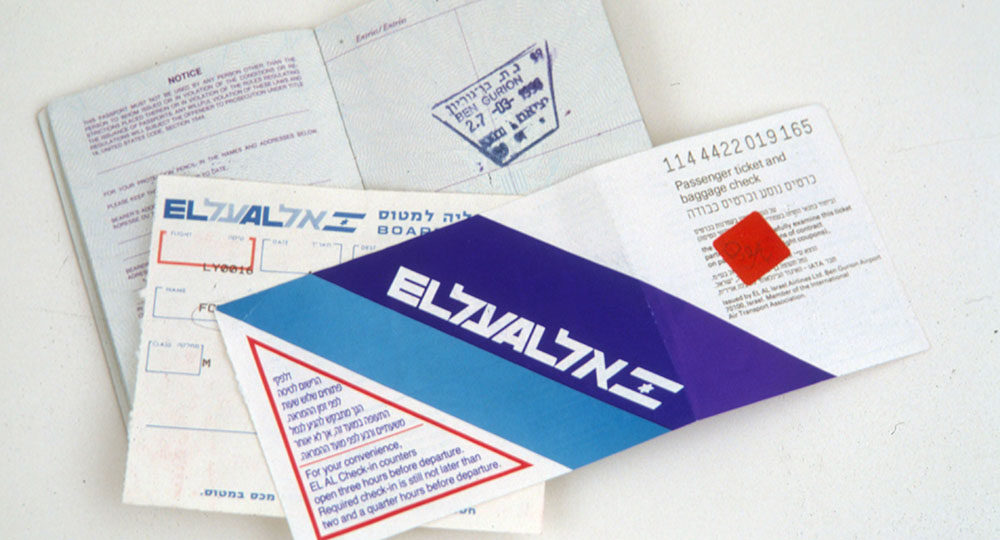The Regathering of Israel
One of the most debated questions of our day is whether or not present-day Israel is the Israel of the Bible. Menachem Begin, when he was Prime Minister of Israel, ran his government on the premise that God has a special purpose for Israel in this day and time. Yet there are many who say that the Israel of today has nothing to do with the Israel prophesied to be on the scene when end-time events occur. Is present-day Israel the nation spoken of in the prophecies of end-time events? The answer to this question is fundamentally bound up in Israel’s history and God’s special dealings with her.
The Abrahamic Covenant
God gave to Abraham three unconditional promises in Genesis 12:1–3. In verse 1 there is the promise of a national blessing—a national land divinely deeded. In verse 2 individual blessing is promised. This, literally, is the promise of numerous descendants. It also points to a day when those descendants will be held in high esteem and be the source of great blessing. In verse 3 is the third promise of universal blessing—redemption, both for Israel and, through her, to all the world. But because of her great sin, the fulfillment of this covenant was postponed.
Moses, in prophesying Israel’s future rebellion, also spoke of her future reestablishment in the land in accordance with the Abrahamic Covenant (Dt. 30:56). This is precisely the same statement made by Jeremiah (Jer. 31:31–33) and known as the New Covenant. Note that the covenant to be replaced is not the Abrahamic Covenant but the Mosaic Covenant (v. 32). Thus, there is a day yet future when God will fulfill completely the covenant He made with Abraham.
The First Dispersion and Regathering
The Bible clearly teaches two distinct dispersions and two subsequent regatherings of the nation of Israel. The first dispersion was prophesied in Deuteronomy 28:36–37 and occurred in two phases. The first phase took place about 721 B.C., when the northern kingdom (Israel) was carried away into Assyria (cp. 2 Ki. 17:6). The second phase began around 608 B.C. when Judah, the southern kingdom, was carried captive into Babylon (cp. 2 Ki. 24:11–16; 25:8–11). Jeremiah-prophesied that the latter dispersion would last 70 years (Jer. 25:11). There was a partial return during the time of Ezra and Nehemiah, around 538 B.C.
The Second Dispersion and Regathering
The second dispersion was prophesied in Deuteronomy 28:25, 63–67. Note that this second dispersion was not into a single nation but “into all the kingdoms of the earth” (v. 25) and “among all people, from the one end of the earth even unto the other” (v. 64). Thus, this was to be a worldwide dispersion, and it was fulfilled in 70 A.D. when Israel rebelled against Rome. Under Titus, Jerusalem and the Temple were destroyed by the Roman army, and the Jews were driven from the land. This dispersion was completed in 135 A.D. under the Roman Emperor Hadrian, and the Jews were scattered worldwide.
The second regathering is prophesied in Deuteronomy 30:1–6 and Isaiah 41:8–20. Again, notice the phrases “among all the nations” (Dt. 30:1) and “Abraham … whom I have taken from the ends of the earth” (Isa. 41:8–9). This is clearly a worldwide regathering for ultimate millennial blessing! Therefore, the second regathering must immediately precede the Messiah’s Second Coming.
Present-Day Israel
What, then, of present-day Israel? To answer that question, consider these facts. Scripture is clear that Israel’s final reestablishment in the land will occur in close connection with the Second Coming of the Messiah. It is further evident that the Messiah’s Second Coming is tied to the second regathering of Israel into her land (Isa. 11:10–12). Note the time of the Messiah’s Second Coming: when “the Lord shall set his hand again the second time to recover the remnant of his people” (v. 11). Note further from whence He shall gather them: “from the four corners of the earth” (v. 12).
It is further evident that, although in unbelief (Ezek. 37:8), Israel will be reestablished as a nation before the beginning of Daniel’s 70th week (Isa. 28:15–18, 22). Isaiah states that Israel will make “a covenant with death, and with sheol” (v. 15). Clearly this is the covenant made with the Antichrist at the beginning of the Tribulation period (cp. Dan. 9:27).
Questions and Conclusions
How can the Antichrist make a covenant with Israel at the beginning of Daniel’s 70th week, except she be a nation at that time? Why would Israel make such a covenant with the Antichrist, except she be in her land in spiritual blindness? Why would the Antichrist even want to make a covenant with Israel, except she be a nation of some political and international importance? How could the Antichrist break the covenant and desecrate the Temple in the middle of the Tribulation period, except a Temple be built by Israel before that time? The plain facts clearly show that in the last days, the second and final reestablishment of Israel in her land, in spiritual blindness, will become the most astounding sign of the time!
As we have seen, Scripture clearly prophesies two dispersions and regatherings of the nation of Israel—and only two. Since two dispersions and one regathering have already occurred, the present regathering of Israel must be the second and final regathering in preparation for the Messiah’s return to reign over the Millennial Kingdom.
The next great event for Israel is the coming of “the time of Jacob’s trouble” (Jer. 30:7). The next great event for the Church is the Rapture. “Wherefore, beloved, seeing that ye look for such things, be diligent that ye may be found of him in peace, without spot, and blameless” (2 Pet. 3:14). “Pray for the peace of Jerusalem; they shall prosper who love thee” (Ps. 122:6).








There is a man who died and was buried in Israel when Jews had started to return in the late 19th century, whose name was “The glory of God” (if you translate it from the Arabic name by which he was known), and his teachings are available to the world. His life was comparable to the times of John the Baptist, and the Messiah Jesus. Is this a mere coincidence? Do you know about it ?
Greetings from Robert.
The final regathering began in 1948. The prophecy of Ezekiel 36-39 is a two-fold prophecy. First, Israel would be regathered back to the land outside faith. Beginning with the Gog/Magog campaign after the rapture but before the start of the Tribulation God begins restoring the people to a covenant relationship with Him. One of the purposes of the Tribulation is to lead Israel into acceptance of Jesus as Messiah. This will ultimately be completed at the revelation of Christ and all Jews will be permanently regathered to their homeland. Much is said, particularly among holders of replacement theology, that the Israel of today aren’t the Jews of that future day but that indicates God has made a mistake in restoring the wrong people to the land and it would violate His promises to Abraham, Isaac and Jacob. God doesn’t make mistakes and not even He can break Scripture for it is His very word and by His name and word He swore on oath.
Ken hope all is going well and good to know you are still on the battlefield for our Lord.
Rockwood Missionary Baptist Church